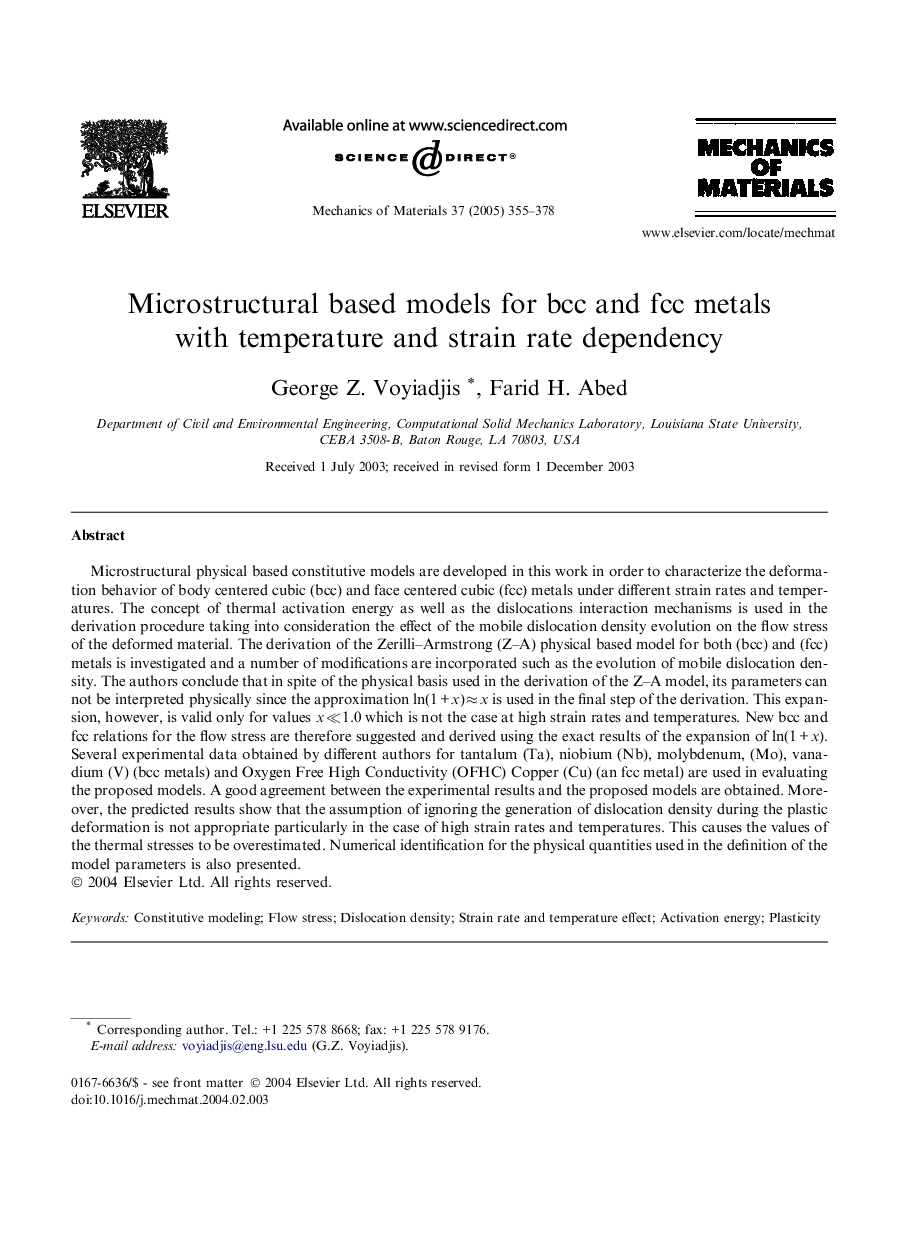| Article ID | Journal | Published Year | Pages | File Type |
|---|---|---|---|---|
| 9711671 | Mechanics of Materials | 2005 | 24 Pages |
Abstract
Microstructural physical based constitutive models are developed in this work in order to characterize the deformation behavior of body centered cubic (bcc) and face centered cubic (fcc) metals under different strain rates and temperatures. The concept of thermal activation energy as well as the dislocations interaction mechanisms is used in the derivation procedure taking into consideration the effect of the mobile dislocation density evolution on the flow stress of the deformed material. The derivation of the Zerilli-Armstrong (Z-A) physical based model for both (bcc) and (fcc) metals is investigated and a number of modifications are incorporated such as the evolution of mobile dislocation density. The authors conclude that in spite of the physical basis used in the derivation of the Z-A model, its parameters can not be interpreted physically since the approximation ln(1 + x) â x is used in the final step of the derivation. This expansion, however, is valid only for values x âªÂ 1.0 which is not the case at high strain rates and temperatures. New bcc and fcc relations for the flow stress are therefore suggested and derived using the exact results of the expansion of ln(1 + x). Several experimental data obtained by different authors for tantalum (Ta), niobium (Nb), molybdenum, (Mo), vanadium (V) (bcc metals) and Oxygen Free High Conductivity (OFHC) Copper (Cu) (an fcc metal) are used in evaluating the proposed models. A good agreement between the experimental results and the proposed models are obtained. Moreover, the predicted results show that the assumption of ignoring the generation of dislocation density during the plastic deformation is not appropriate particularly in the case of high strain rates and temperatures. This causes the values of the thermal stresses to be overestimated. Numerical identification for the physical quantities used in the definition of the model parameters is also presented.
Related Topics
Physical Sciences and Engineering
Engineering
Mechanical Engineering
Authors
George Z. Voyiadjis, Farid H. Abed,
